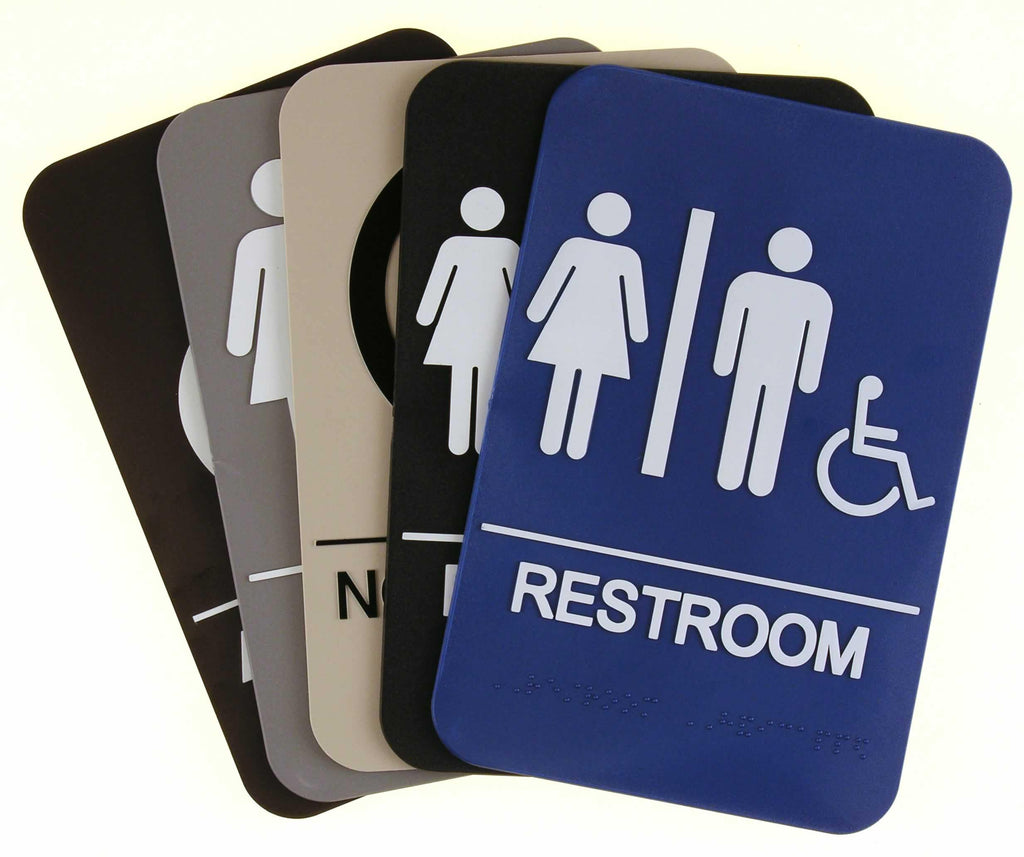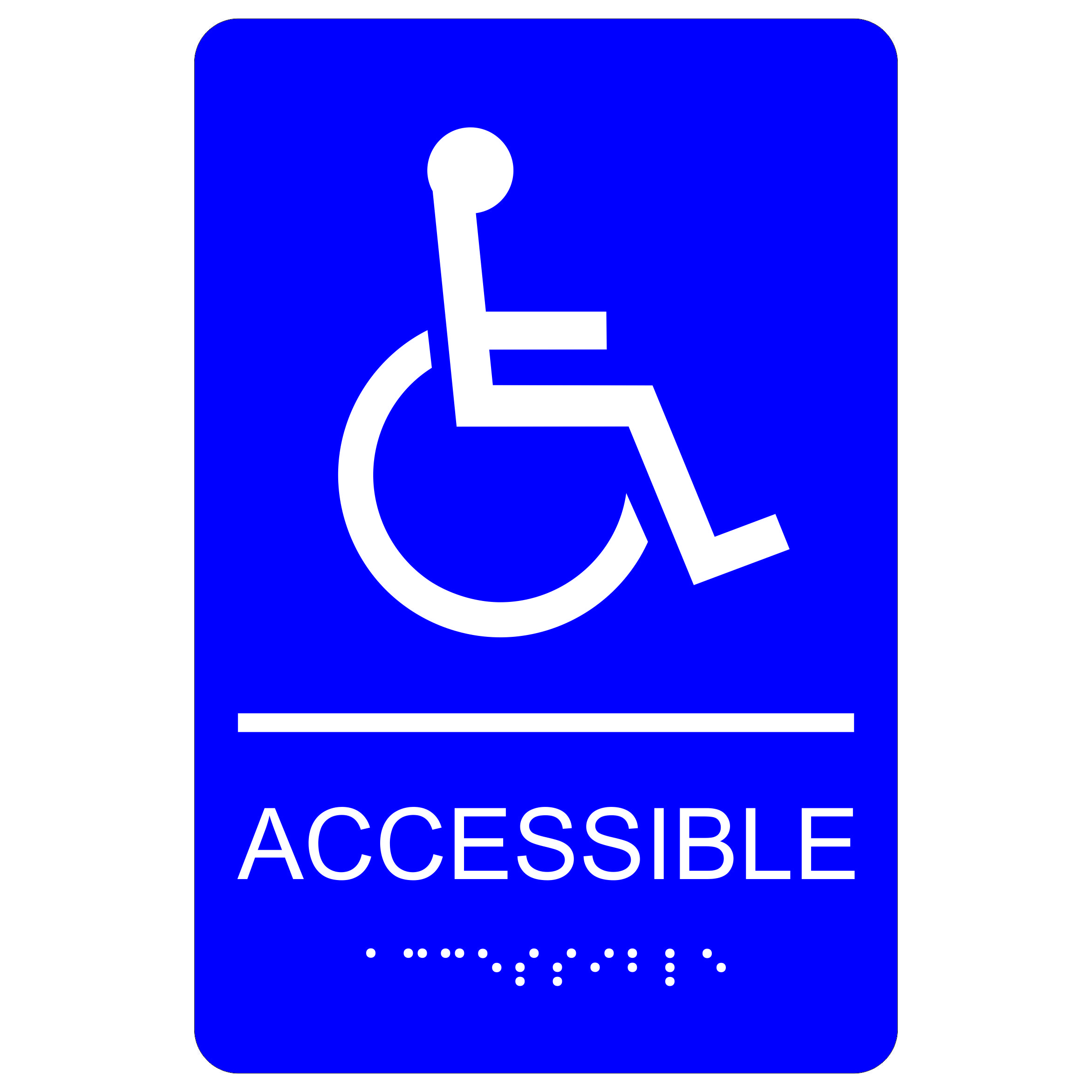Discover the Significance of ADA Signs in Public Spaces
Discover the Significance of ADA Signs in Public Spaces
Blog Article
Exploring the Key Functions of ADA Indications for Enhanced Accessibility
In the world of access, ADA indicators offer as quiet yet effective allies, making sure that areas are accessible and comprehensive for people with disabilities. By integrating Braille and responsive components, these signs damage obstacles for the aesthetically damaged, while high-contrast shade systems and readable fonts cater to diverse aesthetic needs.
Importance of ADA Conformity
Making certain conformity with the Americans with Disabilities Act (ADA) is essential for promoting inclusivity and equal gain access to in public areas and workplaces. The ADA, passed in 1990, mandates that all public centers, employers, and transport services accommodate individuals with impairments, ensuring they take pleasure in the very same rights and chances as others. Compliance with ADA requirements not only satisfies legal obligations yet likewise enhances a company's reputation by showing its dedication to variety and inclusivity.
Among the essential facets of ADA compliance is the implementation of available signage. ADA indications are developed to ensure that individuals with handicaps can easily browse via areas and structures. These indicators need to follow certain standards pertaining to dimension, font style, shade comparison, and placement to assure visibility and readability for all. Effectively executed ADA signage aids remove barriers that people with disabilities often experience, thus promoting their self-reliance and confidence (ADA Signs).
Additionally, sticking to ADA regulations can reduce the threat of possible penalties and lawful repercussions. Organizations that fall short to comply with ADA guidelines may face charges or claims, which can be both harmful and financially difficult to their public picture. Therefore, ADA conformity is important to promoting a fair environment for everyone.
Braille and Tactile Components
The consolidation of Braille and responsive elements right into ADA signs personifies the concepts of ease of access and inclusivity. These functions are important for individuals who are visually impaired or blind, enabling them to navigate public spaces with greater independence and confidence. Braille, a responsive writing system, is important in giving created info in a format that can be easily perceived through touch. It is generally put underneath the matching message on signs to make certain that individuals can access the info without aesthetic assistance.
Responsive components extend beyond Braille and include elevated personalities and signs. These elements are designed to be noticeable by touch, permitting people to recognize room numbers, restrooms, exits, and various other important areas. The ADA sets details guidelines relating to the size, spacing, and placement of these responsive elements to optimize readability and make sure uniformity across various atmospheres.

High-Contrast Color Design
High-contrast color pattern play an essential duty in boosting the presence and readability of ADA signs for people with aesthetic problems. These plans are vital as they take full advantage of the distinction in light reflectance in between text and history, making certain that signs are conveniently discernible, even from a distance. The Americans with Disabilities Act (ADA) mandates making use of specific shade contrasts to fit those with restricted vision, making it a crucial facet of compliance.
The efficacy of high-contrast shades hinges on their capacity to attract attention in different lights conditions, consisting of poorly lit settings and locations with glare. Commonly, dark text on a light history or light text on a dark history is employed to achieve optimum contrast. For instance, black message on a white or yellow history offers a plain visual distinction that aids in quick recognition and comprehension.

Legible Fonts and Text Size
When taking into This Site consideration the design of ADA signage, the option of clear font styles and suitable message size can not be overemphasized. The Americans with Disabilities Act (ADA) mandates that fonts should be not italic and sans-serif, oblique, manuscript, extremely attractive, or of unusual form.
The dimension of the text likewise plays a crucial function in access. According to ADA guidelines, the minimum message elevation should be 5/8 inch, and it should increase proportionally with seeing range. This is particularly essential in public areas where signage requirements to be checked out rapidly and properly. Consistency in message size adds to a cohesive visual experience, assisting individuals in browsing environments efficiently.
Moreover, spacing in between lines and letters is important to readability. Appropriate spacing prevents characters from showing up crowded, boosting readability. By sticking to these criteria, designers can substantially improve availability, ensuring that signage offers its designated function for all people, no matter of their aesthetic capabilities.
Reliable Placement Methods
Strategic positioning of ADA signage is essential for optimizing access and making certain compliance with lawful requirements. ADA guidelines stipulate that signs should be installed at an elevation in between 48 to 60 inches from the ground to ensure they are within the line of sight for both standing and seated people.
Additionally, indicators have to be placed adjacent to the latch side of doors to allow very easy recognition prior to entry. Uniformity in indication positioning throughout a facility boosts predictability, lowering confusion and enhancing total customer experience.

Final Thought
ADA indications play an important role in promoting access by incorporating functions that resolve the needs of people with disabilities. These components jointly promote a comprehensive environment, emphasizing try this web-site the significance of ADA compliance in ensuring equivalent gain access to for all.
In the realm see this here of availability, ADA indicators offer as quiet yet powerful allies, making certain that spaces are accessible and inclusive for people with specials needs. The ADA, passed in 1990, mandates that all public centers, employers, and transportation services accommodate people with specials needs, ensuring they take pleasure in the exact same legal rights and opportunities as others. ADA Signs. ADA indications are developed to make certain that individuals with handicaps can quickly navigate with spaces and buildings. ADA standards state that indications ought to be placed at a height between 48 to 60 inches from the ground to ensure they are within the line of view for both standing and seated individuals.ADA indications play an essential function in advertising ease of access by integrating features that resolve the needs of people with disabilities
Report this page